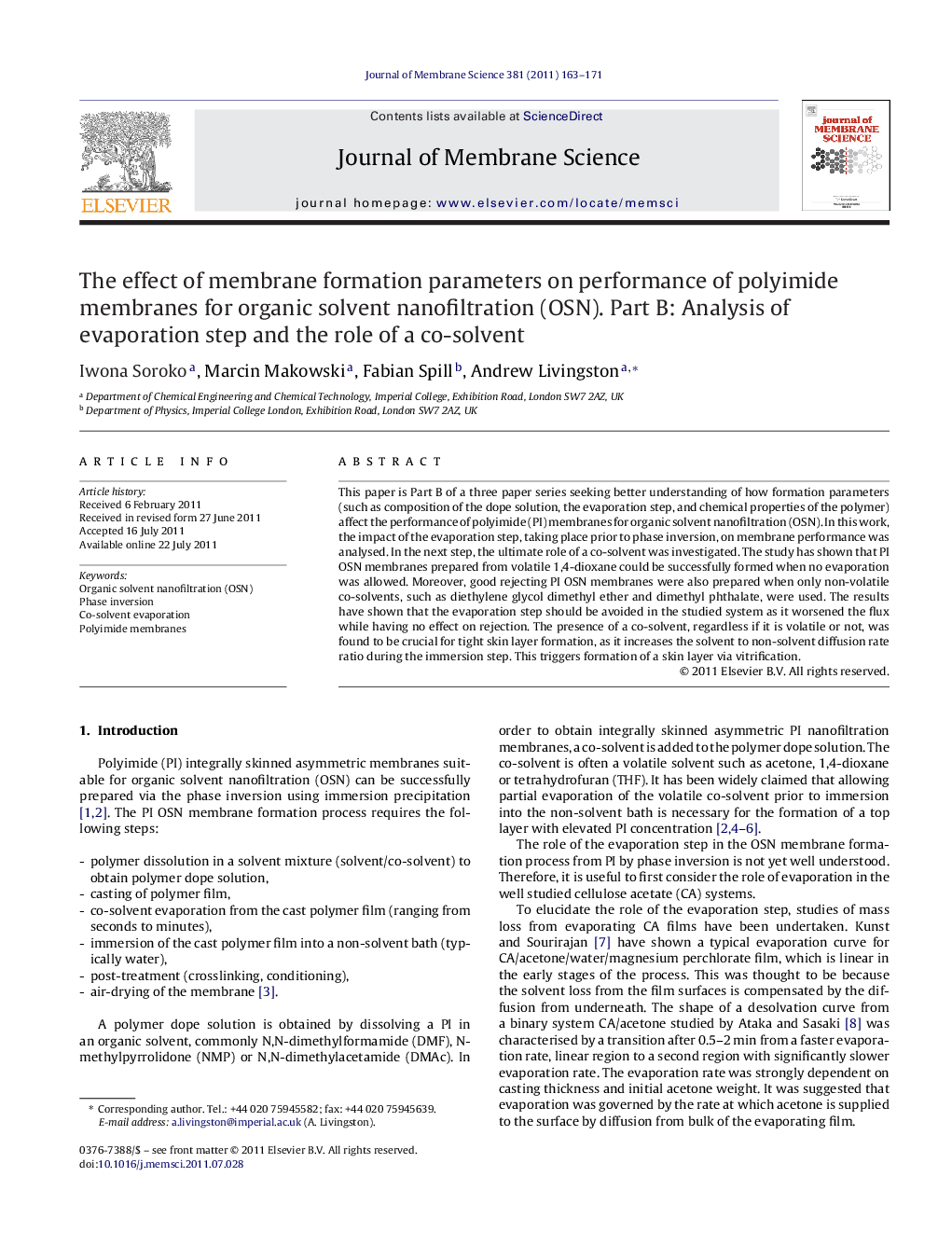| کد مقاله | کد نشریه | سال انتشار | مقاله انگلیسی | نسخه تمام متن |
|---|---|---|---|---|
| 635323 | 1456098 | 2011 | 9 صفحه PDF | دانلود رایگان |

This paper is Part B of a three paper series seeking better understanding of how formation parameters (such as composition of the dope solution, the evaporation step, and chemical properties of the polymer) affect the performance of polyimide (PI) membranes for organic solvent nanofiltration (OSN). In this work, the impact of the evaporation step, taking place prior to phase inversion, on membrane performance was analysed. In the next step, the ultimate role of a co-solvent was investigated. The study has shown that PI OSN membranes prepared from volatile 1,4-dioxane could be successfully formed when no evaporation was allowed. Moreover, good rejecting PI OSN membranes were also prepared when only non-volatile co-solvents, such as diethylene glycol dimethyl ether and dimethyl phthalate, were used. The results have shown that the evaporation step should be avoided in the studied system as it worsened the flux while having no effect on rejection. The presence of a co-solvent, regardless if it is volatile or not, was found to be crucial for tight skin layer formation, as it increases the solvent to non-solvent diffusion rate ratio during the immersion step. This triggers formation of a skin layer via vitrification.
► Co-solvent is necessary for skin layer formation of integrally skinned NF membranes.
► Co-solvent does not have to be volatile.
► Evaporation time is not necessarily required for skin layer formation.
► Elongated evaporation time can worsen flux with no effect on rejection.
► Skin layer is likely to form via vitrification rather than liquid–liquid demixing.
Journal: Journal of Membrane Science - Volume 381, Issues 1–2, 30 September 2011, Pages 163–171